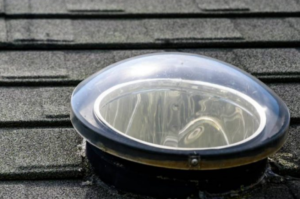Candles have often been associated with peace, ambiance, and romance. It is no wonder that these ancient beacons of light have survived the weary nature of time and still exist in the modern world where electricity has taken most of their jobs. It is commonplace in various households and religious places. However, beneath their flickering charm lies a potential threat to both our health and the environment. This article aims to point out some of the subtle and lesser-known impacts of candles, addressing questions about their environmental consequences and potential health risks.
Environmental Impact of Burning Candles

a. Paraffin Wax and Fossil Fuels
Most candles are made from paraffin wax. Yes, it is the most common variant out there. Burning paraffin contributes to environmental pollution. Paraffin is derived from fossil fuels and thus releases harmful emissions into the air which consequently contributes to air pollution and escalates the carbon footprint.
b. Deforestation and Agriculture
There are other types of candles too, such as those made from palm wax ( derived from palm olein oil, something which needs an article of its own). The process of preparation of these types of wax is linked to deforestation. Do this on a large scale to cater to an ever-growing market, and you have the recipe for environmental disaster.
c. Carbon Footprint
As discussed earlier candle production, from cultivation to transportation, adds to the overall carbon footprint.
Air Quality and Scented Candles

a. Chemical Emissions
Scented candles, while popular for their aromatic allure, release volatile organic compounds (VOCs) when burned. VOCs like toluene and benzene contribute to indoor air pollution, potentially causing respiratory issues and worsening existing health conditions.
b. Synthetic Fragrances
The synthetic fragrances used in scented candles often contain phthalates, chemicals linked to adverse health effects. These chemicals can be released into the air during burning, posing health risks for individuals exposed to them.
c. Alternatives for Improved Air Quality
Opting for candles scented with natural essential oils rather than synthetic fragrances can reduce the emission of harmful chemicals, improving indoor air quality and minimizing health risks.
Environmentally Friendly Candle Choices

a. Beeswax and Soy Candles
Choosing candles made from beeswax or soy provides environmentally friendly alternatives. Beeswax is a natural byproduct of beekeeping, while soy is a renewable resource with a lower carbon footprint compared to paraffin.
b. Minimal Packaging
You can also consider candles with minimal or eco-friendly packaging. Excessive and non-biodegradable packaging contributes to environmental waste. There are tons of options when it comes to sustainable packaging.
Health Risks Associated with Scented Candles
a. Respiratory Issues
Scented candles are a very popular variant and are burnt specifically for their emission. While they can be very pleasant, burning them releases VOCs and phthalates that have been shown to escalate respiratory problems. Individuals with pre-existing conditions like asthma may experience exacerbated symptoms.
b. Allergies and Sensitivities
Other than worsening respiratory illness, burning scented candles can also trigger allergies and sensitivities in some individuals. This happens due to the chemicals present in them which react with air upon burning.
Conclusion
Candles surely add an ambiance to our surroundings and are quite beautiful too. However, we must understand and at least be aware of their potential negative impacts and realize their demerits. In our next article, we will cover some eco-friendly and sustainable alternatives to them and how you can incorporate them into your lifestyle.
What’s more? Learn about organic detergents, and how they can be a sustainable alternative to regular ones.





